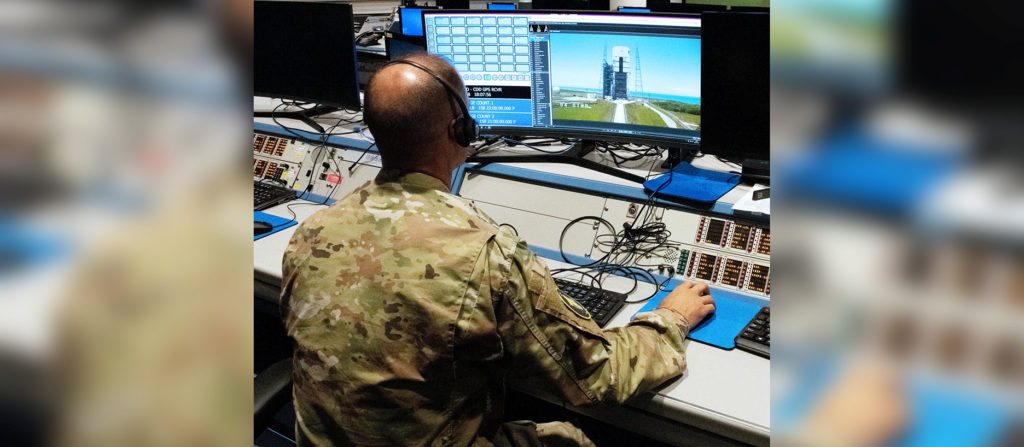The Space Force is projecting budget reductions in the next few years—the first such cuts since the service was established in late 2019, according to a recently publicized report to Congress.
Whether such reductions will actually come to pass remains uncertain.
The Department of the Air Force’s Comprehensive Strategy for the Space Force, required by the 2023 National Defense Authorization Act, includes a chart showing the service’s projected budget broken down by mission area over the future years defense program—from fiscal 2024 through 2028.
The Space Force’s 2024 budget request is for $30 billion, with investments in missile warning systems, GPS, and launch vehicles.
The document shows, however, steady decline from 2024 through 2026, with a topline figure below $30 billion in both 2025 and 2026. That is followed by a sharp uptick in 2027, above the 2024 funding level.
The chart specifically indicates cuts in spending for the coming years in areas such as Missile Warning/Missile Tracking and classified programs. Classified programs in particular are slated to decline every year over the FYDP.
Space Force spokesperson Maj. Tanya Downsworth told Air & Space Forces Magazine that the projected temporary decline in topline funding is the result of several systems transitioning from their development phase into operational readiness and the completion of prototype demonstrations.
Downsworth also emphasized that these estimations are subject to evolving requirements, emerging threats, and changes in force structure.

Last year, lawmakers expressed concerns about the Space Force’s capacity to sustain its ambitious plans and growth, particularly regarding missile warning and missile tracking (MW/MT), and asked for a new cost estimate by January 2023.
The comprehensive strategy document indicates that MW/MT investments will decline in the next few years before bumping up significantly in 2027.
The document also highlights the redesign of the Space Force’s MW/MT architecture.
“In collaboration with key stakeholders and considering emerging threat assessments, rigorous analysis, and wargaming was used to define a more resilient, more capable and more defendable MW/MT architecture,” the strategy states.
Downsworth added that this is one example where the service is innovating to ensure readiness; and deter, and, if necessary, defeat adversaries in an era of great power competition.
Lawmakers are the only ones who have expressed concern about the USSF budget and possible limitations as expanding capabilities demands hardware and personnel.
Back in June, Gen. David D. Thompson voiced reservations about leaner future investments hindering mission fulfillment.
“Either the department may need to look at its priorities for various investments, or we will have to throttle the growth that we have seen and the delivery of capabilities,” Thompson said during a livestreamed event by Mitchell Institute for Aerospace Studies. “It will simply be incumbent on us to make sure that our leaders inside the Department of Defense and in the White House and Congress understand the risks we’ll take if in fact we cannot continue that.”
Thompson also underscored that the issue lies in the fact that the existing budget agreement does not match inflation, which will reduce the service’s purchasing ability in the coming critical two years.
Like the rest of the Pentagon, the Space Force continually revisits its five-year plan and offers updates alongside its budget submissions. The fiscal 2025 budget request is slated to be submitted in February 2024. The five-year plan shown in the strategy document is only up-to-date as of February 2023.
Downsworth added that in terms of the overall budget decrease, some programs may be projected to end, but the scale of funding expectation may change to support Joint Force requirements and will be reevaluated each year. She said during the “dip year,” the service aims to put existing capabilities into active use or operation, as well as acquiring new capabilities and resources.
Space Force Budget Requests By Year
| Year | Amount |
| 2021 | $15.4 billion |
| 2022 | $18.05 billion |
| 2023 | $26.1 billion |
| 2024 | $30 billion |
